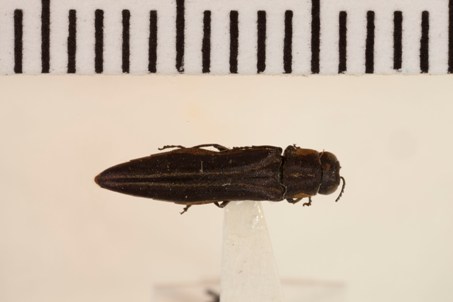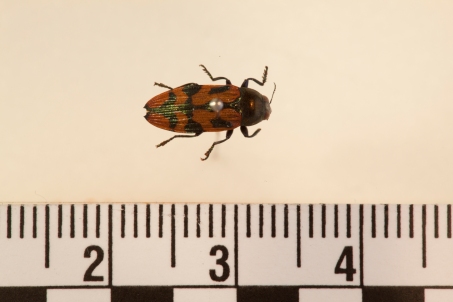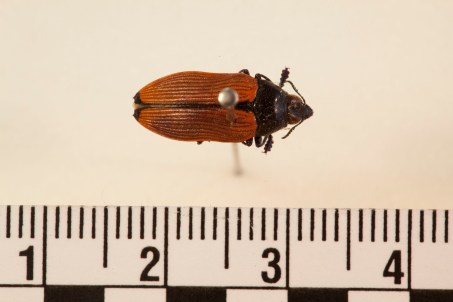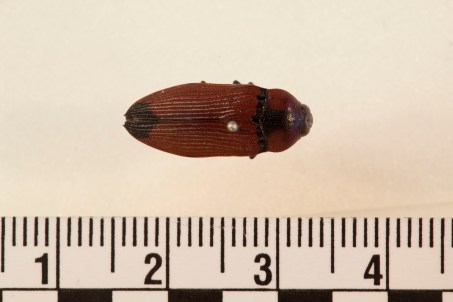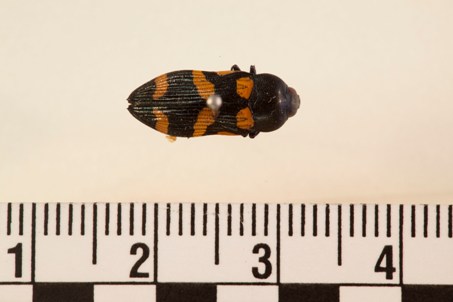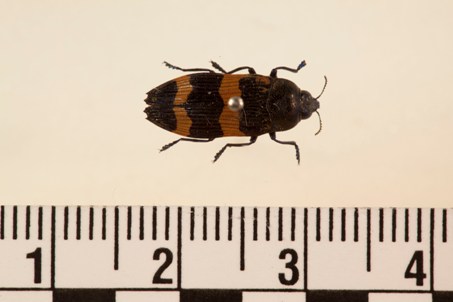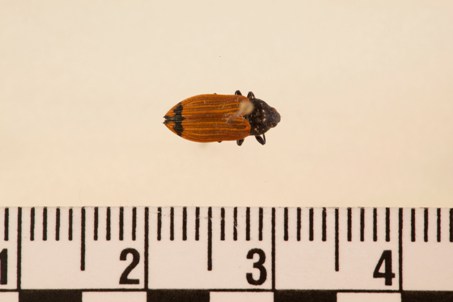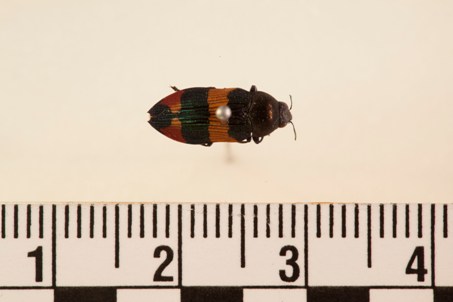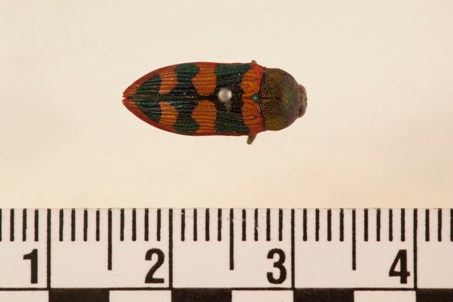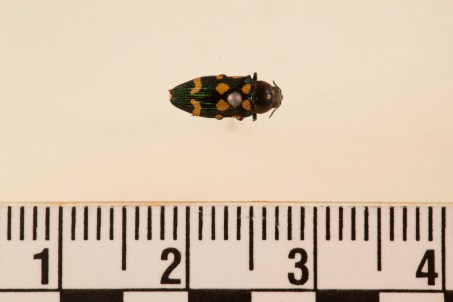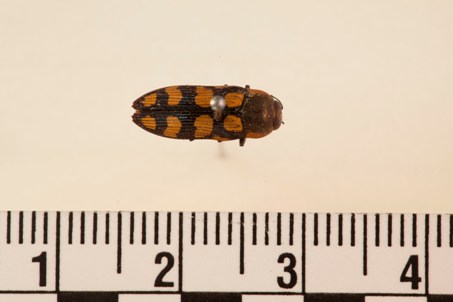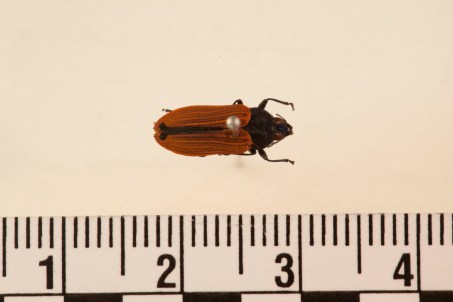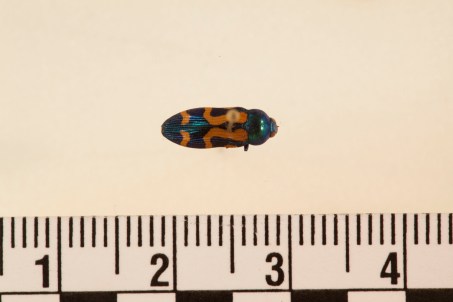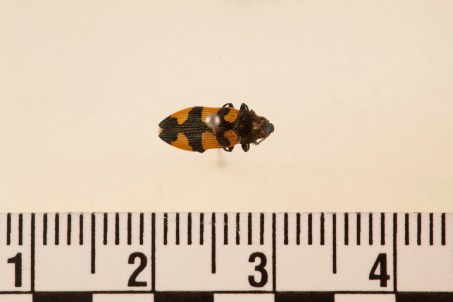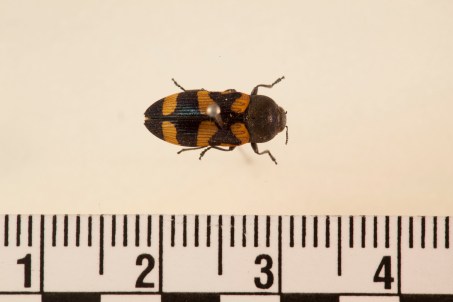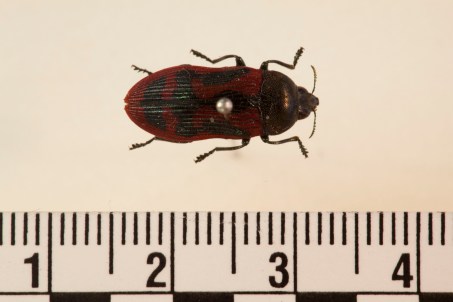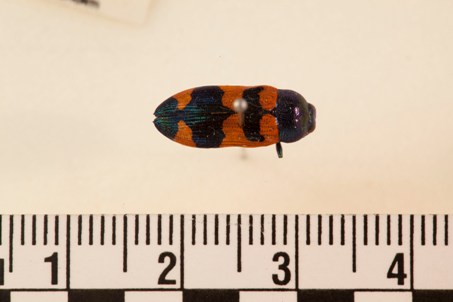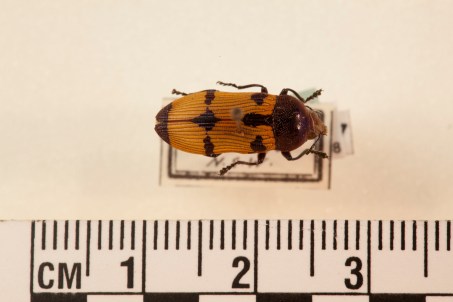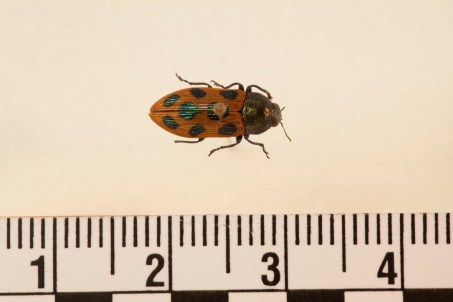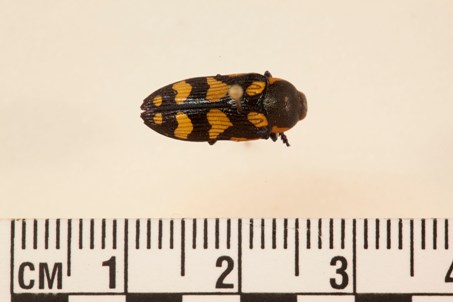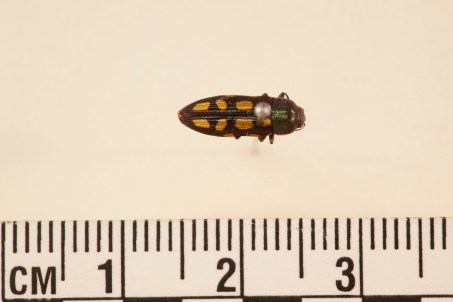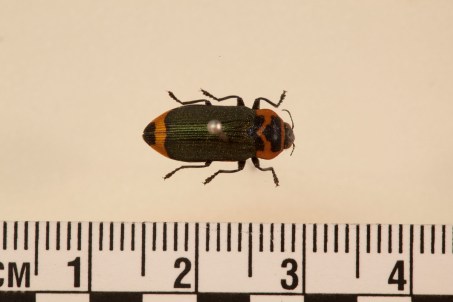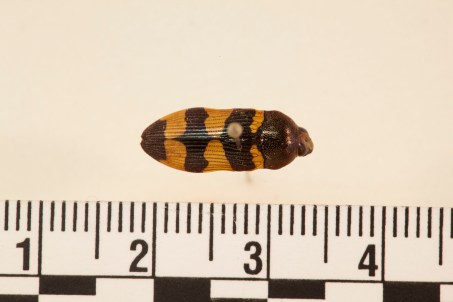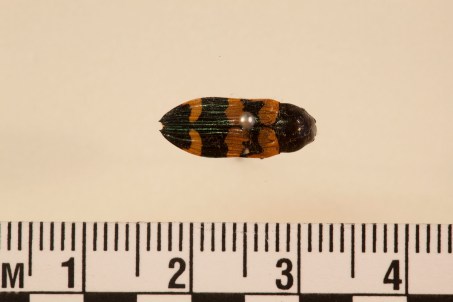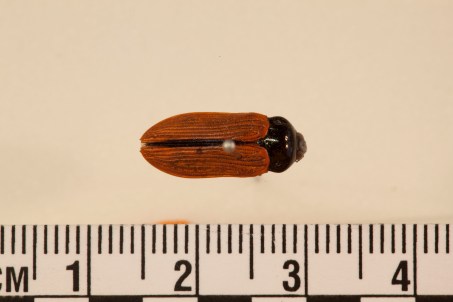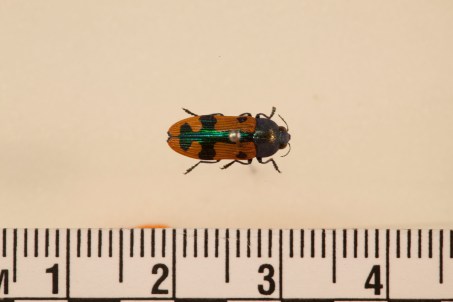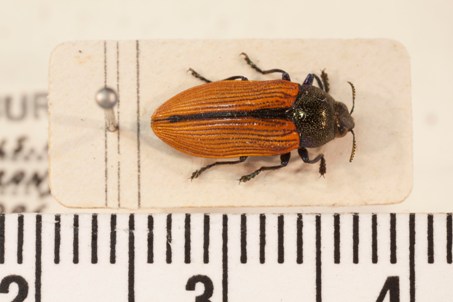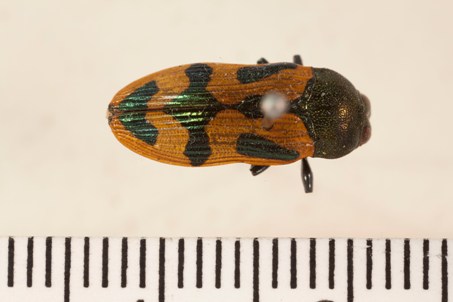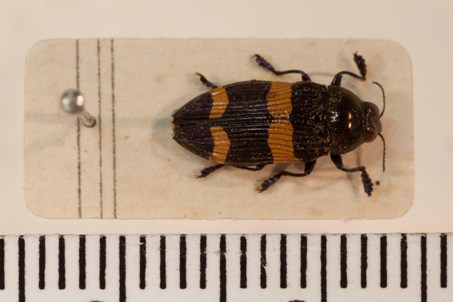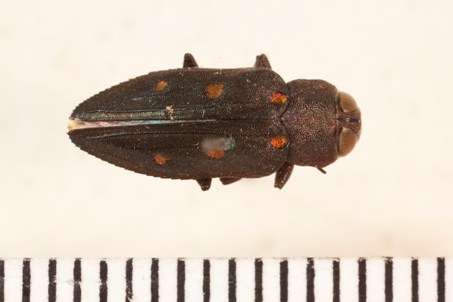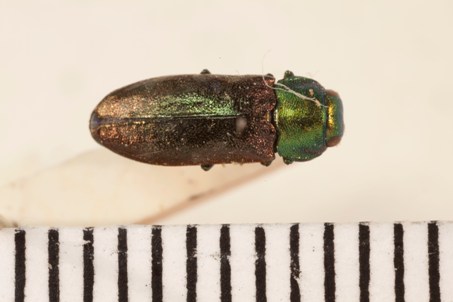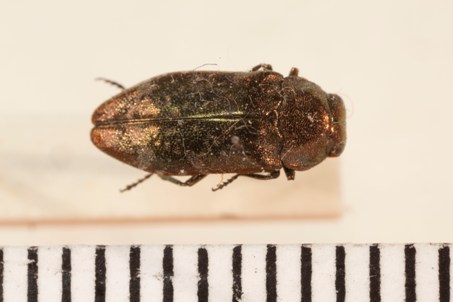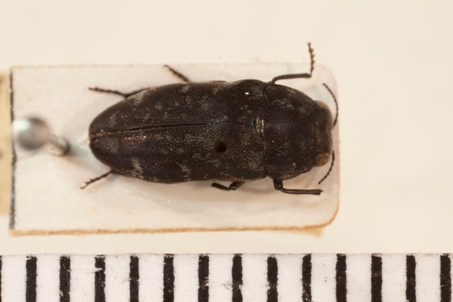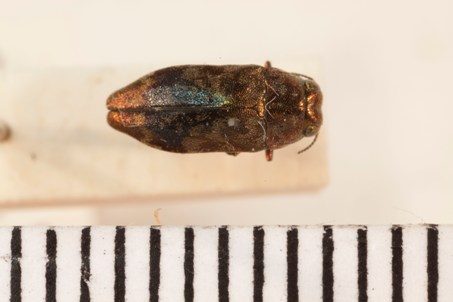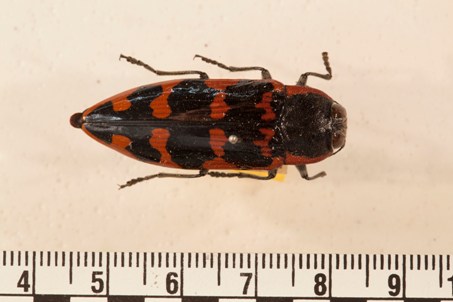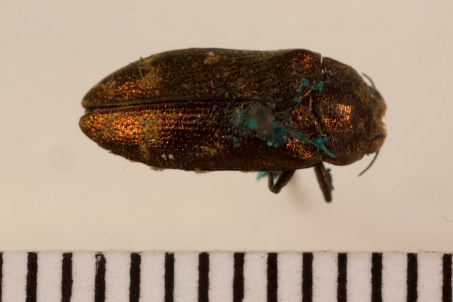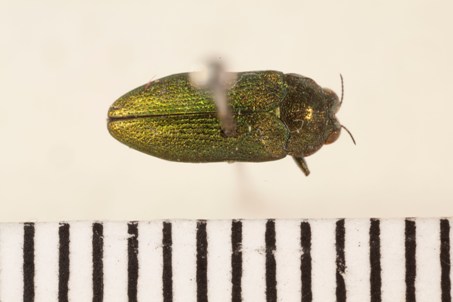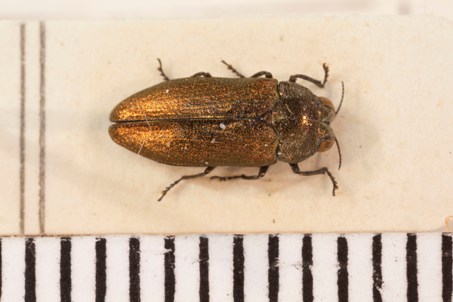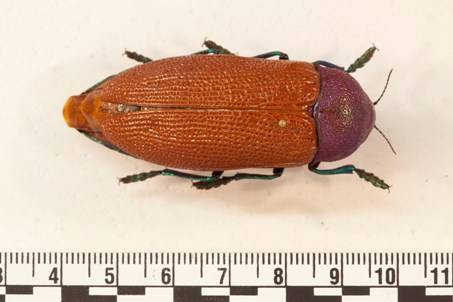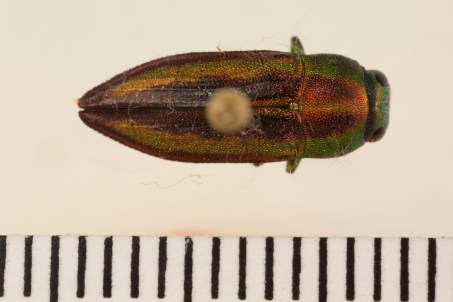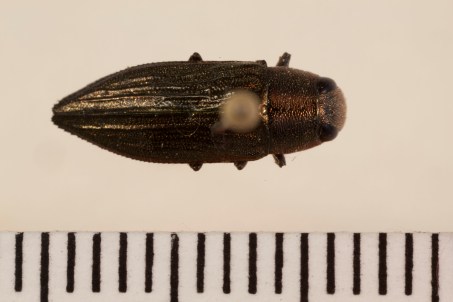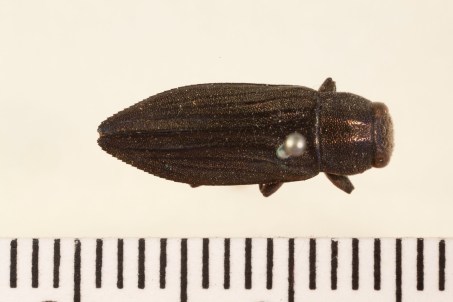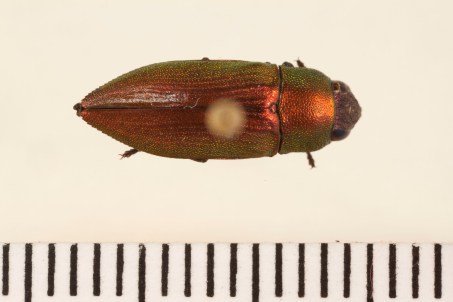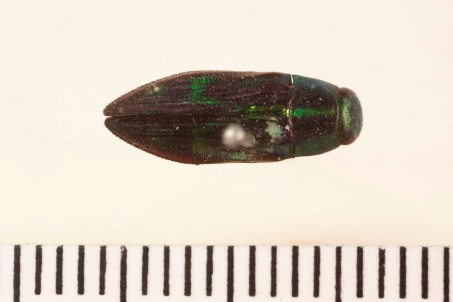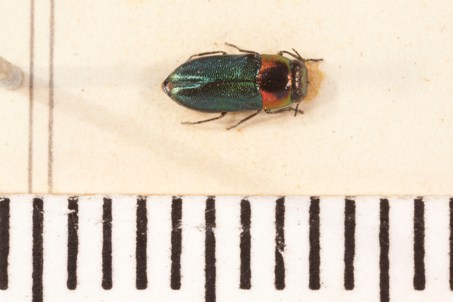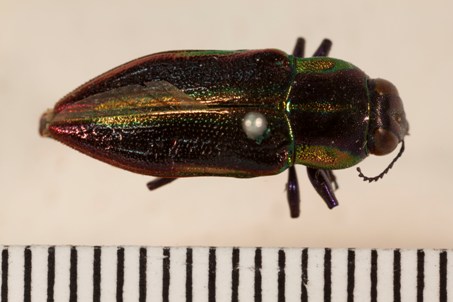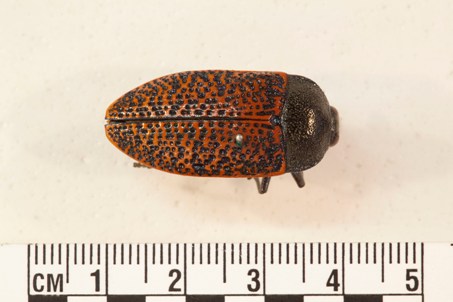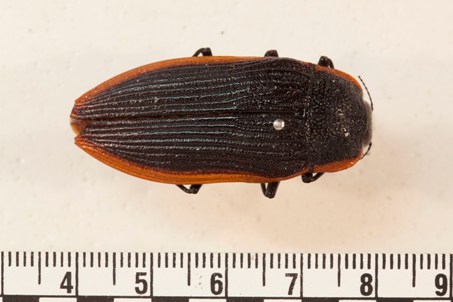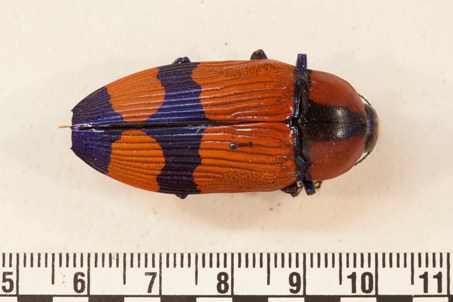Jewel Beetles in Cumberland Plain Woodland
The University of Western Sydney Office of Sustainability and School of Science and Health have partnered with the Australian Museum (opens in a new window) to prepare a Jewel Beetle Identification Kit for use in the critically endangered Cumberland Plain Woodland in Greater Western Sydney.
Jewel Beetle Gallery (please click the image above). Photographs taken by Michael Dingley © 2013.
About Jewel Beetles
Jewel or metallic wood-boring beetles (family Buprestidae) are among one of the most spectacular groups of beetles with unique stunningly iridescently colours and patterns.
Like other insects beetles have a life cycle that includes egg, larvae, pupa and adult. The larvae are typical wood borers with life cycles of months to years, even decades. The emerged adults are typically elongate in shape, often brightly metallically coloured, are active and readily take to flight if disturbed. The adults emerge in the summer months and feed on bark, stems, leaves, flowers and the nectar of Eucalypt, Acacia and Wattle trees.
To view all of the Jewel Beetle species please click the image at the top of the page to access an image gallery.
Habitat and Movement Corridors
The jewel beetle movement corridors provides a link between the registered remnants of Riverstone Nature Reserve, Hawkesbury Nature Reserve and the Castlereagh State Forest. These corridors are made up of Cumberland Plain Woodland (opens in a new window), a native vegetation community listed as a Critically Endangered Ecological Community under the Threatened Species Conservation Act, 1995.
Over 130 years ago the Cumberland Plain Woodland covered around 30% of the Sydney Basin, home to many different kinds of flora and fauna. Today less than 6% remains in small fragments scattered across western Sydney. The woodlands have been reduced to a few fragmented sections due to farming, industry and housing and are still under intense pressure from continued urban development. Without the Cumberland Plain Woodland to support the population of jewel beetles with some where to live, breed and eat we may see the extinction these amazing beetles in western Sydney.
In 1995 in recognition of the threat to, the rarity of and the great local diversity of jewel beetles in outer western Sydney, the habitat and movement corridor were recognised. At the time the area was home to 44 species of jewel beetle, 4 of which are rare and another 8 considered nationally uncommon. Australian Museum records as of 2013 indicate the species count now at 61, however, the diversity and abundance of them is current unknown.
View the map to find out Where to find the Jewel Beetles (JPG, 3654.72 KB) (opens in a new window) in Greater Western Sydney.
Spotted a Beetle?
Have you seen any of these jewel beetles flying around western Sydney? If you have please email sustainability@uws.edu.au and let us know.
Acknowledgements
This project is a joint initiative between the University of Western Sydney and the Australian Museum. We would like to thank the following people for their participation in the project:
- Dr Adrian Renewshaw, School of Science and Health UWS
- Mr Michael Dingley, School of Science and Health UWS
- Miss Brittany Hardiman, Office of Sustainability UWS
- Ms Jacquie Recsei, Australian Museum
- Mr Dave Britton, Australian Museum
More information
- Map: Where to find the Jewel Beetles (JPG, 3654.72 KB) (opens in a new window)
Mobile options:

